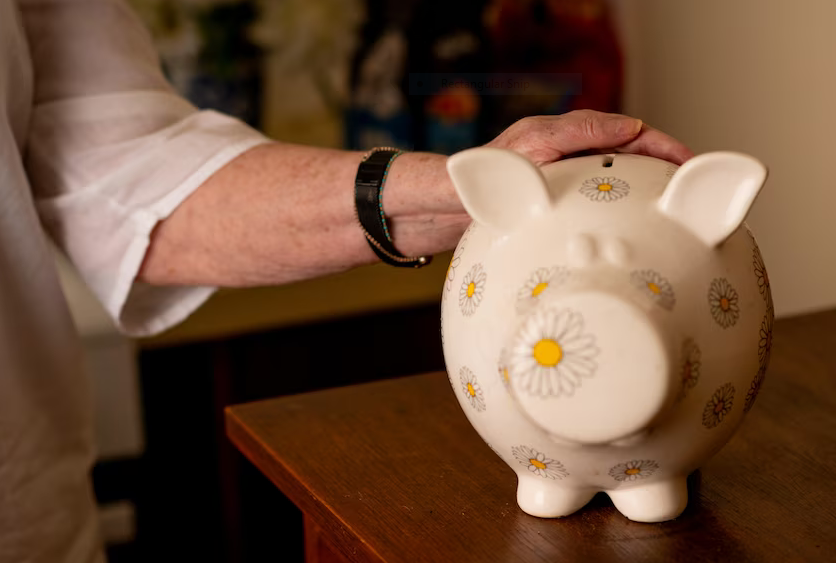The stale scent of mould hits Elaine’s nostrils before she even gets through the front door of her social housing flat — a stark reminder she is not living the retirement she had hoped for.
Elaine is a world away from the 25-acre property she used to call home.
“I thought, ‘I had so much promise in my life, and this is where I ended up’,” she said.
Driven by a desire to help others, Elaine worked in sectors like aged care and social services, taking on jobs the government is still desperate to fill.
But after nearly five decades in the workforce, she retired with just $45,000 in superannuation.
Superannuation is the biggest driver of wealth inequality in Australia, according to a report by the Australian Council of Social Service (ACOSS) and the University of New South Wales (UNSW).
People with the largest balances retire with at least seven times more in super than those with the smallest, the report found.
It is a gap that has only been growing in the past 20 years.
‘I see no reward for my efforts’
Elaine’s story is typical of many older women who fall on hard times, experts say.
She entered the workforce in the 1970s, making about $50 per fortnight.
And while her wage grew over time, superannuation was not compulsory until 1992 — and Elaine found there was little left over in her pay packet to set aside for retirement.
“I worked from two days after my 16th birthday, till I was 63,” she said.
“I paid taxes for all those years, and now I see no reward for my efforts.”
Elaine went through a divorce in the early 2000s, and used the money she received in the settlement to pay for a transportable home.
But when she was diagnosed with a hormonal disorder known as Cushing’s syndrome, she became increasingly concerned about finances and downsized further by moving into a caravan park.
“I was making some very poor decisions around about that time because of my illness,” she said.
“I just thought that this would be a stress-free life and that turned out to be more stressful than anything. I hated it.”
After the caravan park, she found an apartment — but could no longer afford the $250 weekly rent when cost-of-living pressures hit two years ago.
“I knew I was going to come to that pointy end, where I was not going to be able to afford anything other than the Housing Trust or community housing,” she said.
While Elaine is thankful she has access to social housing and a pension, she feels left behind.
“I’m not important in this world. That’s how I feel. And I think a lot of other people feel like that,” she said.
Wealth inequality ‘blows out’
The gap between Australians with the most and the least has “blown out” over the past two decades, the report by ACOSS and UNSW shows.
“At the top end of our households [by wealth], they have on average about half-a-million dollars in superannuation wealth,” said the report’s author, Professor Carla Treloar.
“The bottom 20 per cent households, by wealth, have on average about $66,000 in superannuation assets.”
Professor Treloar said the lower-wealth households were particularly reliant on superannuation, while the top had prospered through other investments such as shares and real estate.
Overall, the highest 20 per cent in the country had 90 times more wealth than the lowest 20 per cent.
“That’s a really good pause for thought to see if our policy settings are right to contribute to where we want Australia to be in another two decades,” Professor Treloar said.
Linda Elkins from KPMG Australia said women had less superannuation than men because they often “dominated the non-paid activities”.
“We have that gap because superannuation is based on salary and wages and women have periods of not earning salary and wages due to child-bearing and caring responsibilities,” she said.
A KPMG report into the superannuation gap, authored by Ms Elkins, found that women aged 50 to 54 had on average 32 per cent less super than men, while women aged 60 to 64 had 23 per cent less than men.
Women are also more likely to work in lower-paid industries, it found, reducing their super payments over time.
Ms Elkins wants employers to have to pay the compulsory 11 per cent super contribution for periods of paid parental leave and carer’s leave.
She also wants tax concessions for women who want to make “catch-up payments” for their missed superannuation contributions.
The Australian government’s inquiry into homelessness two years ago found older women were among the most vulnerable cohort.
“They might lose their housing, or they have to skip meals, or they have to compromise on looking after their health,” Professor Treloar said.
But although Elaine’s retirement has become more about making sacrifices at a supermarket aisle than travelling the country, she is hopeful things may get better.
“Honestly, this isn’t the end,” she said.
“Something great might happen. You don’t know.”





